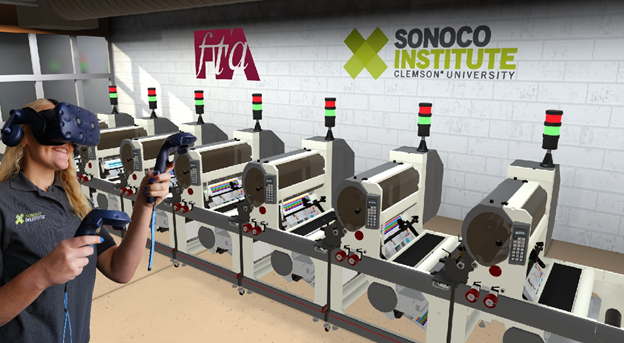Although digital media consumption dominates our lives, print continues to play a crucial role, especially in packaging. As we browse both physical and eCommerce stores, eye-catching printed packaging still influences our choices. Despite packaging’s prominence, the flexographic printing industry has experienced decreased employment. This decline is driven by two primary factors: the retirement of a generation of skilled craftspeople (the “Silver Tsunami”) and a younger workforce raised on disruptive digital technologies.
The Role of VR in Flexographic Training
An emerging solution to this workforce challenge is virtual reality (VR), often associated with gaming but now making waves in industries like printing. VR is not only attracting younger generations but also positioning flexographic printing as a sophisticated, technology-driven profession. The integration of VR into flexographic training is reshaping how the industry approaches skill development, making training more engaging and efficient.
What is STRIPE VR and How It’s Changing Flexographic Training?
Clemson University’s Sonoco Institute of Packaging Design & Graphics provides research, testing, and flexographic training for both newcomers and established industry professionals. Their innovative STRIPE VR platform is part of this initiative. Originally used for consumer behavior studies, the Institute quickly realized that VR could be extended to flexographic training, especially with the complexities modern presses present.
As video-based training became less effective, STRIPE VR emerged as an interactive tool that simulates real-world scenarios on flexo presses. According to Bobby Congdon, Assistant Director of the Sonoco Institute, “Our transition to using virtual reality for flexographic training was driven by industry needs. Many companies are facing high turnover and long training periods for new hires.” With STRIPE VR, students can now practice on virtual presses, learning valuable skills without the risks associated with hands-on press operation.
The Benefits of STRIPE VR in Flexographic Training
STRIPE VR offers a safer, more engaging alternative to traditional flexographic training. Students can gain hands-on experience with no physical risks while instructors create real-life press scenarios to encourage critical thinking. This type of immersive learning equips the next generation of press operators and packaging designers with practical knowledge they can apply in real-world situations.
In addition to the VR headset version, Clemson has also developed STRIPE Online, a browser-based version of the training tool. This means that flexographic training can be accessed from anywhere, further increasing accessibility for students and professionals alike.
Anderson & Vreeland’s Support for Flexographic Training Through STRIPE VR
Recognizing the potential of STRIPE VR, Anderson & Vreeland has become a leading sponsor of this cutting-edge flexographic training tool. As a company dedicated to advancing flexo education, A&V believes that STRIPE VR will revolutionize how companies train their workforce. Paul Teachout, A&V’s Business Development Manager, highlighted the evolution of press equipment, stating that “Clemson’s VR technology is perfectly timed to train today’s generation on flexo technology, which has become highly sophisticated.”
A&V’s sponsorship aligns with their commitment to flexo education, helping to bring awareness to this transformational training method. The company hopes that STRIPE VR will become the primary way for printing companies to train employees as the technology continues to evolve.
Discover cutting-edge flexographic supplies and equipment with Anderson & Vreeland. Contact us today to enhance your printing operations with industry-leading solutions

